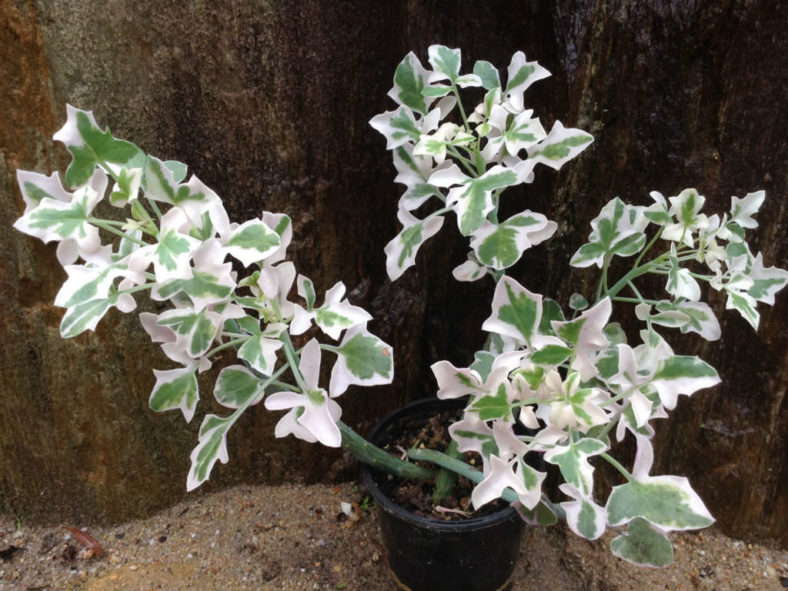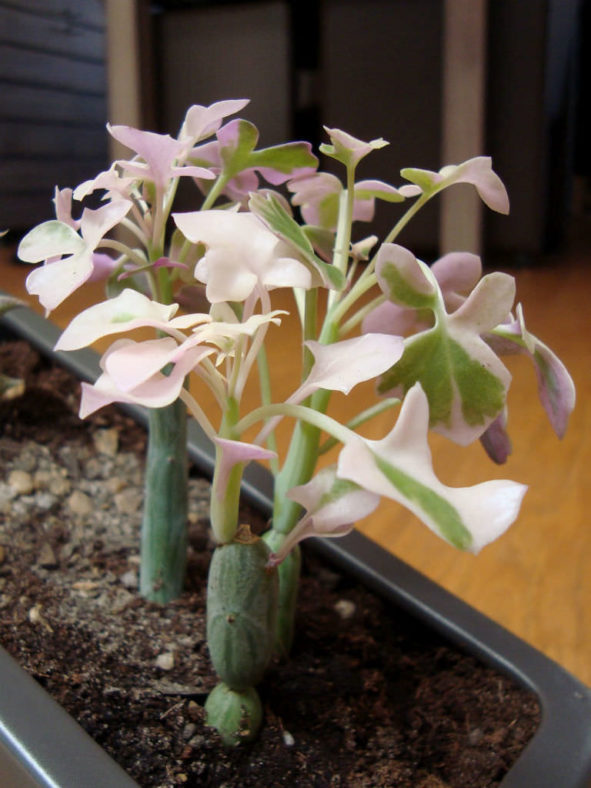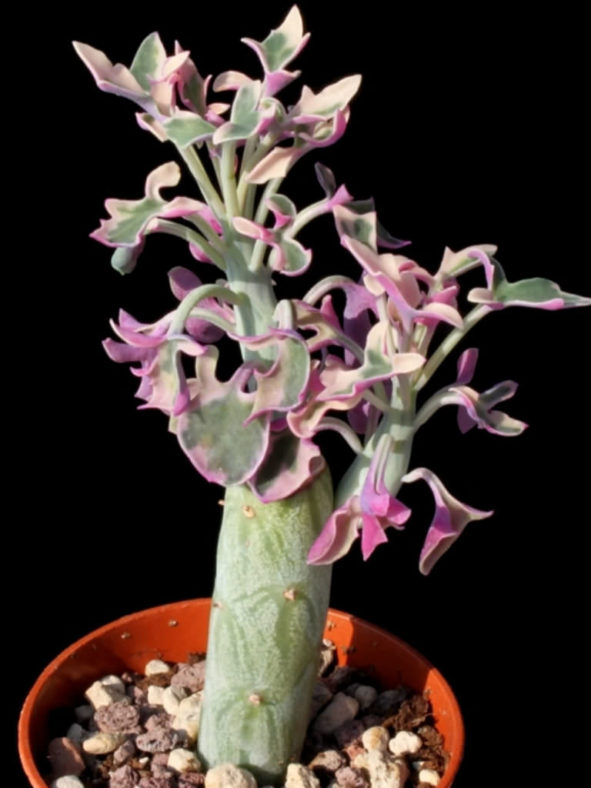Scientific Name
Curio articulatus 'Candlelight'
Accepted Scientific Name
Curio articulatus (L.) P.V.Heath
Common Name(s)
Candle Plant
Synonym(s)
Curio articulatus f. variegatus, Senecio articulatus f. folia rubra, Curio articulatus 'Variegatus', Senecio articulatus f. variegatus, Senecio articulatus 'Candlelight', Senecio articulatus 'Variegatus'
Scientific Classification
Family: Asteraceae
Subfamily: Asteroideae
Tribe: Senecioneae
Subtribe: Senecioninae
Genus: Curio
Origin
This attractive form of Curio articulatus selected for its variegated foliage, was described as Senecio articulatus 'Candlelight' by Gordon Rowley in 1994.
Description
Curio articulatus 'Candlelight', formerly known as Senecio articulatus 'Candlelight', is a colorful succulent with segmented, sausage-shaped stems and green leaves with lovely creamy-white, pink, or purple tones. The stem segments are fleshy, grey-green with darker green or purple markings. They can grow up to 4 inches (10 cm) long and 0.8 inches (2 cm) in diameter. The plant loses its leaves and goes dormant in summer.
The flowers are white and appear in small corymbs, usually in winter.

How to Grow and Care for Curio articulatus 'Candlelight'
Light: Outdoors, Keep Curio plants in partial shade, which they prefer in summer, and bright sunlight indoors. They will grow in full shade but will become lank and leggy.
Soil: These plants prefer well-draining soil. For growing Curio indoors, using a container with at least one drainage hole at the bottom is essential.
Hardiness: Curio articulatus 'Candlelight' can withstand temperatures as low as 25 to 50 °F (-3.9 to 10 °C), USDA hardiness zones 9b to 11b.
Watering: Curio plants are drought tolerant, but the soil should never be left dry for too long. They need some water during the growing season, but be careful not to leave the soil wet for prolonged periods.
Fertilizing: The members of this genus can take a bit more fertilizer than other succulents if you want them to grow fast.
Repotting: You do not need to repot Curio plants often. You can do it when the container becomes too small or shallow.
Propagation: These plants can be grown from seeds or cuttings.
Learn more at How to Grow and Care for Curio.
Toxicity of Curio articulatus 'Candlelight'
Curio plants are toxic. Grow them with great care if you have children, pets, or livestock.
Links
- Back to genus Curio
- Succupedia: Browse succulents by Scientific Name, Common Name, Genus, Family, USDA Hardiness Zone, Origin, or cacti by Genus
Photo Gallery
Click on a photo to see a larger version.



